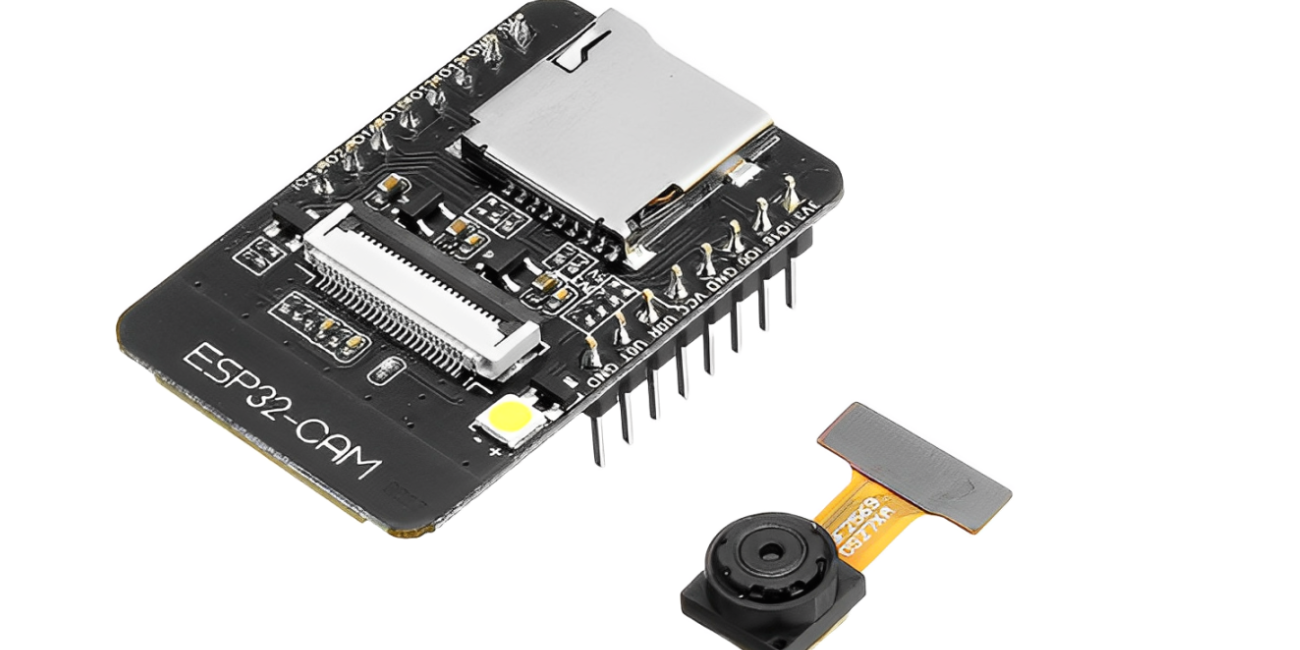Introduction
The ESP32, a versatile and cost-effective microcontroller, has revolutionized the Internet of Things (IoT) landscape. Combining it with the OV2640 camera module unlocks a world of exciting possibilities for projects involving image capture, processing, and transmission. This blog post will explore the key features of this dynamic duo and guide you through the initial steps of getting started.
ESP32: A Versatile Microcontroller
- Dual-Core Processor: The ESP32 boasts a powerful dual-core Tensilica Xtensa LX6 microprocessor, capable of handling demanding tasks efficiently.
- WiFi and Bluetooth: Integrated Wi-Fi and Bluetooth connectivity enable seamless wireless communication with other devices, networks, and the cloud.
- Low Power Consumption: The ESP32 is designed for low-power operation, making it ideal for battery-powered applications.
- Rich Peripheral Set: It offers a comprehensive set of peripherals, including GPIOs, ADC, DAC, I2C, SPI, UART, and more, providing flexibility for various projects.
- Development Tools: The ESP32 is well-supported by various development environments, including the Arduino IDE, MicroPython, and ESP-IDF.
OV2640: A High-Performance Camera Module
- High Resolution: The OV2640 is a popular choice for image capture due to its high resolution and excellent image quality.
- Small Form Factor: Its compact size makes it easy to integrate into various projects.
- Support for Multiple Interfaces: It supports various interfaces, including I2C and SPI, for easy communication with the ESP32.
- Low Power Consumption: The OV2640 is designed for low-power operation, minimizing power consumption in your projects.
Combining ESP32 and OV2640: Unleashing Possibilities
- Home Automation: Build intelligent security systems with motion detection and facial recognition capabilities.
- Smart Agriculture: Monitor crop health, detect pests, and automate irrigation systems using image analysis.
- Robotics: Implement computer vision algorithms for object detection, navigation, and obstacle avoidance in robotic applications.
- Industrial Automation: Develop machine vision systems for quality control, defect detection, and process optimization.
- IoT Projects: Create innovative IoT devices that capture and transmit visual data, such as smart surveillance cameras, wildlife monitoring systems, and remote inspection tools.
Getting Started
-
Hardware Setup:
- Assemble the Circuit: Connect the OV2640 camera module to the ESP32 using the appropriate wiring. Refer to the datasheets for pin connections and wiring diagrams.
- Power Supply: Provide power to the ESP32 and the camera module.
-
Software Development:
- Choose Your Development Environment: Select your preferred development environment (Arduino IDE, MicroPython, or ESP-IDF).
- Install Necessary Libraries: Install the required libraries for camera communication and image processing.
- Write Your Code: Develop the code to control the camera module, capture images, process them, and transmit the data over Wi-Fi or Bluetooth.
Conclusion
The combination of the ESP32 and OV2640 opens up a vast array of possibilities for IoT projects. With its powerful processing capabilities, wireless connectivity, and support for computer vision algorithms, this dynamic duo empowers developers to create innovative and impactful applications. By exploring the resources available and experimenting with different projects, you can unlock the full potential of this exciting technology.
Disclaimer: This blog post is for informational purposes only and does not constitute professional advice. Always refer to the official documentation and safety guidelines when working with electronic components.

